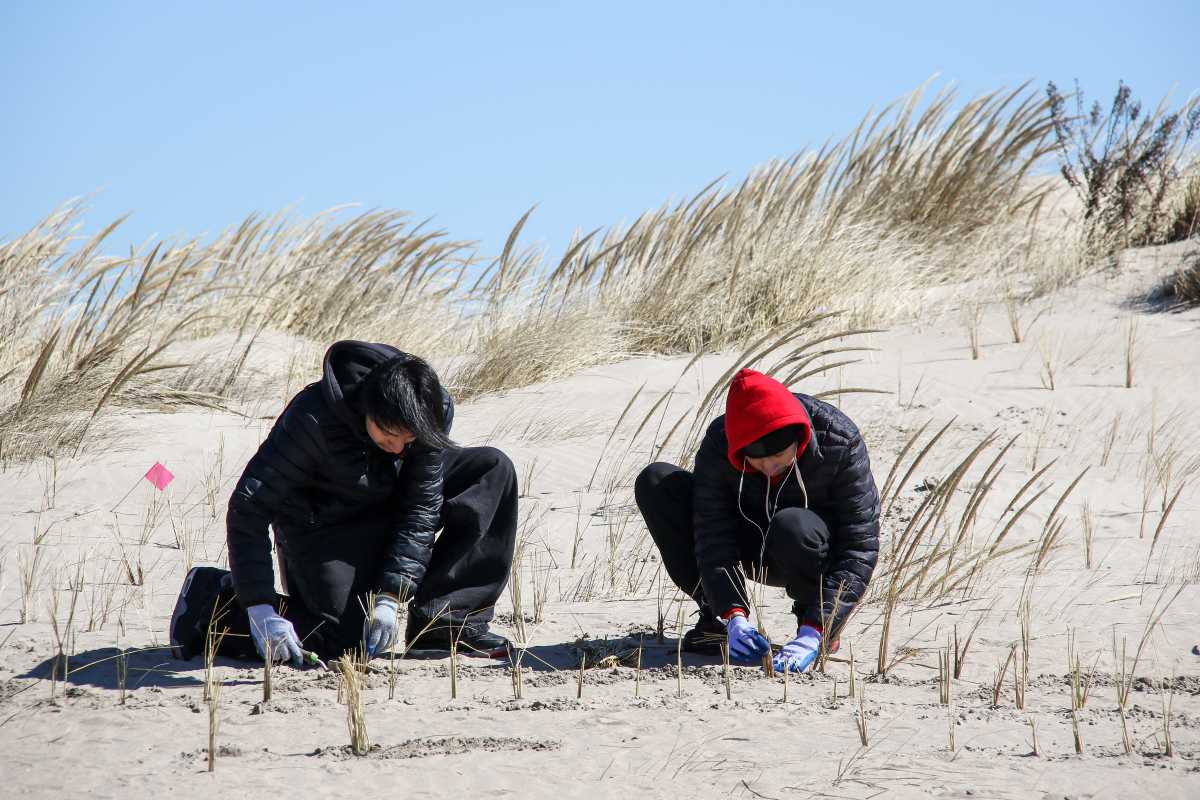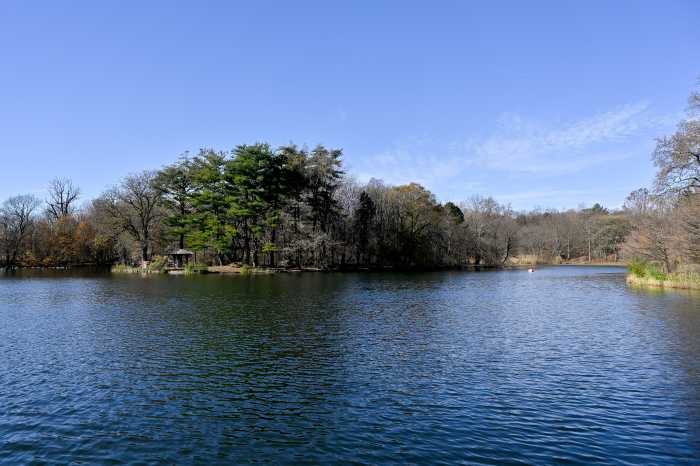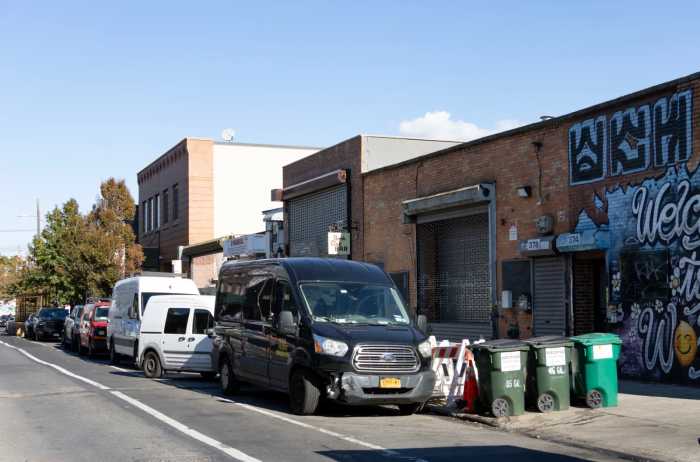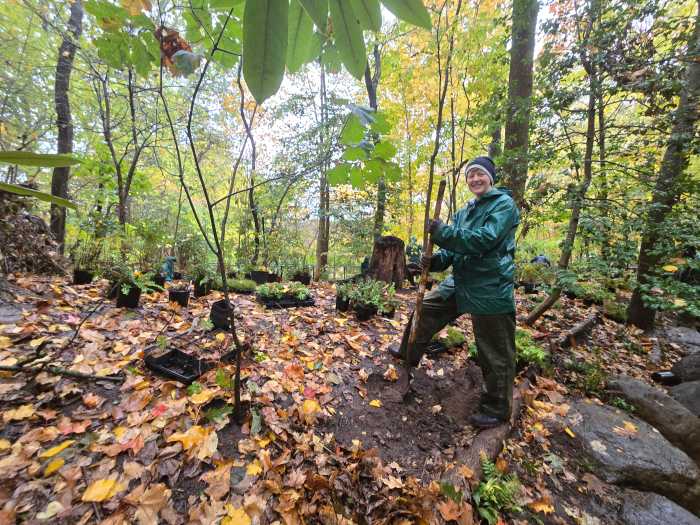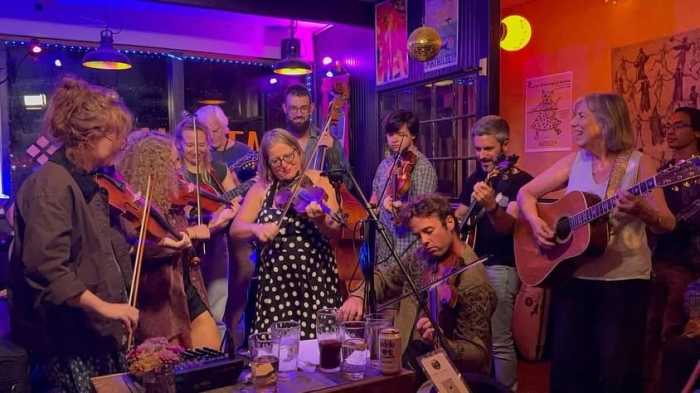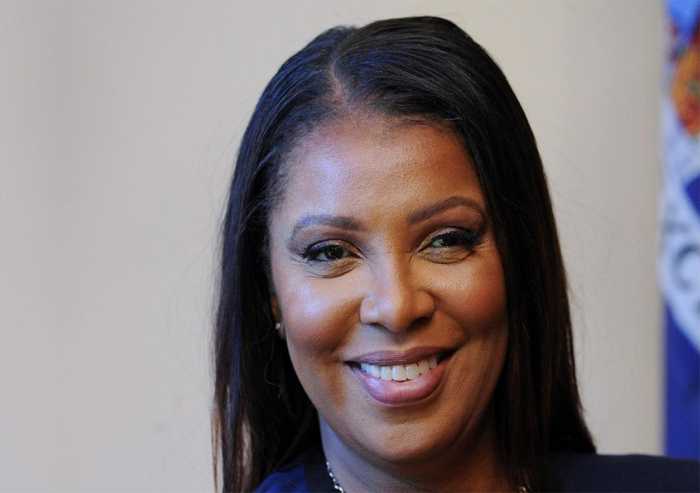Over 400 student volunteers from across the city helped plant native beach vegetation along the dunes of Coney Island Creek Park this past planting season, part of an effort to combat flooding and climate impacts threatening the southern Brooklyn neighborhood.
The students — representing 20 public schools from Brooklyn, Queens, Manhattan, and the Bronx — participated in the spring planting last month as part of the Resilient Schools and Communities (RiSC) program, a climate resilience education initiative launched by the National Wildlife Federation.
Over five days, they planted 14,100 American beach grass culms and collected nearly 1,600 pounds of debris from the shoreline, according to data provided by NWF/RiSC Climate Education Program Manager Abby Jordan.
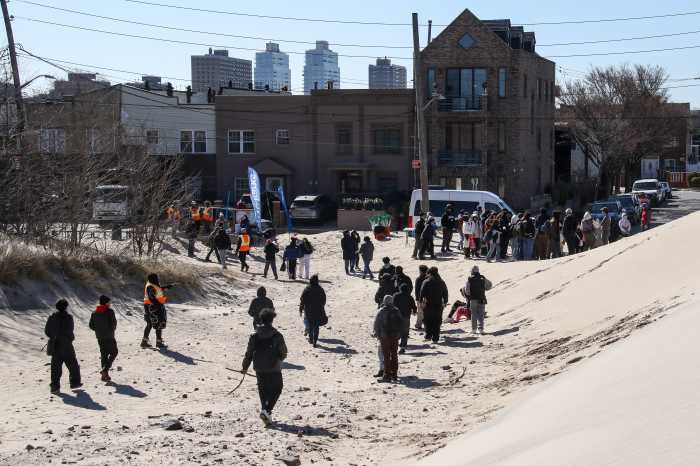
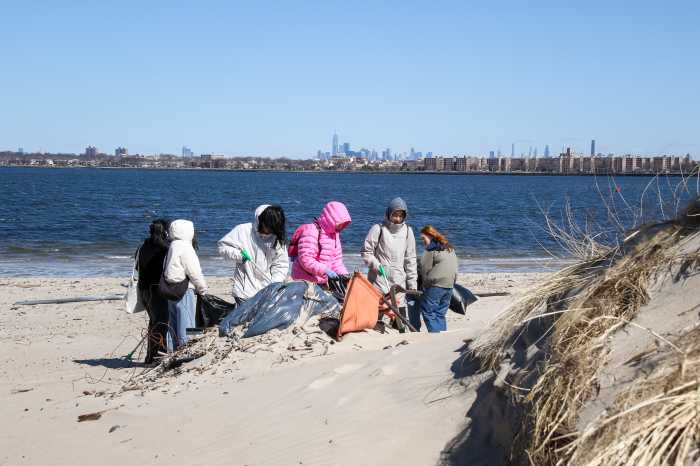
RiSC’s planting program, now in its fifth year in Coney, is a collaboration between NWF, the American Littoral Society, the Coney Island Beautification Project, and NYC Parks. Each day began with “educational powwows,” where students learned about dune ecology, stormwater management, and climate resilience.
The Coney Island peninsula — formerly a barrier island until it was connected to the rest of the borough by landfill in the 1930s — is one of the city’s most climate-vulnerable neighborhoods. The neighborhood sits in FEMA flood evacuation Zone 1, was devastated by Storm Sandy in 2012, and is experiencing increasingly frequent “sunny day” flooding due to sea-level rise and stormwater backing up through overwhelmed drains.
The 2012 storm brought an 11-foot storm surge that flooded homes, damaged infrastructure, and filled streets with debris and sludge. Today, threats persist not only from coastal flooding but also from water surging up through storm drains, eroding land, and endangering the lives of locals.
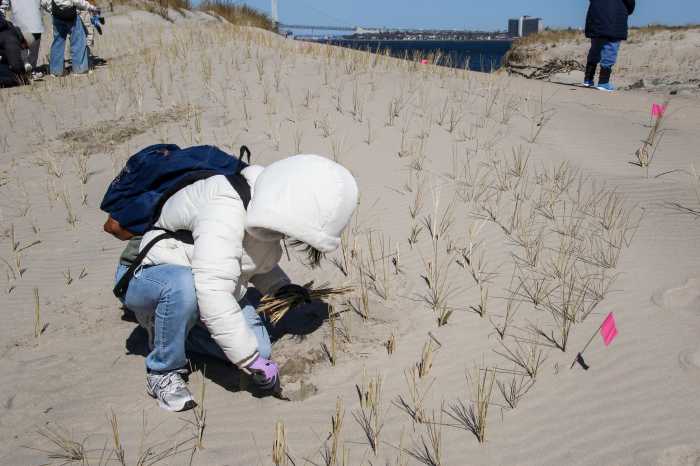
Coney Island’s vulnerability ranking is stark. With a Social Vulnerability Index of 0.8845, and as sea levels rise, projections indicate the neighborhood could be underwater by the end of the century.
Jordan said RiSC’s educational program is designed not only to teach students about climate science but also to connect them emotionally and physically with the local environment.
“Even students who grew up in Coney Island had never visited the Creek Park before,” she said. “They’re amazed to discover this place, and that they can be part of restoring it.”
Living shorelines like the one students are helping build offer a natural defense. Anchoring sand dunes with native vegetation — especially American beach grass (Ammophila breviligulata), known for its dense, stabilizing root systems — helps to slow erosion, reduce wave impact, filter pollutants, and provide habitats for wildlife.
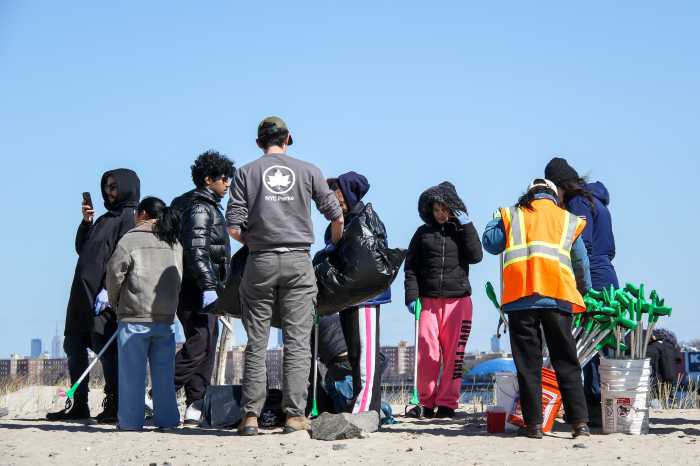
“American beach grass helps create a subterranean root network that stabilizes the sand,” said Jordan. “It’s a proven solution to mitigate — not eliminate — coastal flooding, erosion, and storm surge. And it gives young people a tangible way to fight climate change.”
“Having a young person from Coney Island or a Brooklyn neighborhood at 15 come out to a coastal park like Coney Island Creek Park to talk about climate change, talk about sea level rise, talk about the challenges, and then be part of the solution, then it just comes in a little bit more grounding feature,” added Jordan. “Because what we do hear from our young people — as truly creative and bright and still curious about the world — is this anger and fear of why we are not moving towards solutions to address this very serious, very scary problem that is climate change.”
Additional reporting by Erica Price


